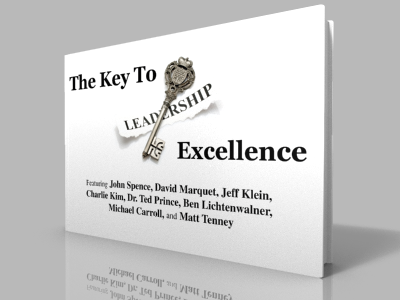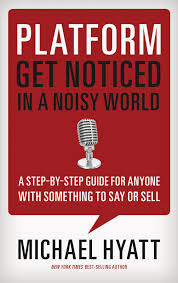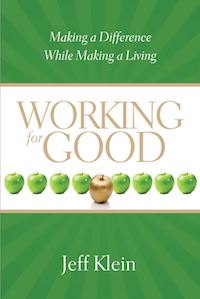A Powerful Tool For Empowering Your People – Brian Burt, CEO of MaestroConference
A Powerful Tool For Empowering Your People – an Interview with Brian Burt, CEO of MaestroConference
In this interview with MaestroConference CEO, Brian Burt, you’ll learn about some amazing tools for empowering your employees, creating ownership mentality, and having significantly better meetings. This one tool completely transformed the culture at MaestroConference.
At Charles Schwab, Brian led many multi-million-dollar technology projects in the areas of telephone technology, marketing, and CRM systems. He has also led a very successful consulting firm specializing in large technology project leadership, and has co-hosted events with Deepak Chopra, Jack Canfield, Marianne Williamson, and many others. He is a skilled facilitator who also holds a Master’s degree in Mathematics / Mathematical Economics. To learn more about MaestroConference or Brian, please visit: http://maestroconference.com/
To learn more about Holacracy, please visit: http://holacracy.org/
Michael Hyatt – Platform – A Guide to Building a Large Online Following
A Review of Platform, By Michael Hyatt
A great guide to building a large online following by integrating blogging and social media.
I just finished reading an excellent book by Michael Hyatt, called Platform: Get Noticed In a Noisy World.
- If you run a business or a non-profit, having a large platform is a more effective tool for marketing than traditional advertising unless you have a lot of money to spend on large campaigns. A platform allows you to generate lots of word-of-mouth exposure that people trust a lot more than they do paid advertising.
- If you’d like to publish a nonfiction book, the first thing publishers look at is the size of your platform. Case in point, I actually have a tentative book deal with one of the largest publishers in the world. They learned about my book idea, which they love, as a result of a personal introduction from one of their authors. But I won’t actually have a contract with them until I grow my platform a bit more.
- If you’d like to share your ideas as a speaker, having a large platform means that instead of having to spend a lot of time and money on marketing, people will contact you.
How to Create a Highly Innovative Culture (Part 2)
“In early January 2009, Goodnight held a global webcast and announced that none of its 13,000 worldwide employees would lose their job. He simply asked them all to be vigilant with spending and to help the firm endure the storm. ‘By making it very clear that no one was going to be laid off,’ Goodnight told me, ‘suddenly we cut out huge amounts of chatter, concern, and worry – and people got back to work.’ What likely will be astonishing to many is that SAS had record profits in 2009 even though Goodnight was perfectly willing to let his then-33-year track record of increased profit come to an end.
“At 70 years old, Goodnight holds the conviction that ‘what makes his organization work are the new ideas that come out of his employee’s brains.’ He therefore holds his employees in the highest esteem. So while he fully anticipated that the recession would constrain the firm’s short-term revenues, he instinctively knew that his team would produce breakthrough products while his competitors were cutting costs. And even four years later, his commitment to his people has paid off handsomely. Said Goodnight, ‘new stuff we’re rolling out this year is going to take the market by storm.’”
How to Create a Highly Innovative Culture (Part 1)
How To Be a Better Remote Leader – Raul Lopez, President of Phoenix Multicultural
It is rare to find great examples of humble leaders who truly serve and care for their employees. It is even more rare to find a leader who is doing this effectively despite having to lead a remote team. I recently had the honor of interviewing Raul Lopez, who does just that.
Mr. Lopez is the president of Phoenix Marketing International, Multicultural Division, but spends most of his time working from the home office or traveling. In this interview, you’ll find some valuable insights into being a better servant leader, whether you see your people every day or you lead a remote team.
To learn more about the Phoenix Marketing International, Multicultural Division, click here.
Did you like this post? To receive The Ultimate Leaders E-Zine for FREE, just Click Here. It includes all my blog posts, interviews with great leaders, and other resources to help you become the Ultimate Leader.
Can You Do Good and Still be Successful?
Our world is filled with endless choices. Do we focus on social media or personal relationships? Do we eat low carbs or low fat, or both? Do we take the red pill or the blue pill?
Love and care similarly bring out the best and most in people. If you care about and for the people you work with and if they care about and for you, your connection to them is deep, and you are motivated to serve and support each other.
When people are aligned and alighted in purpose, supporting and serving each other — and others who they come in contact with (including customers and other stakeholders of the business) — the business is alive. It attracts attention and fosters relationships built on trust and loyalty, which leads to resilience and sustainability.
This is very good for business!
Seek A Meaningful Life Instead Of A Pleasant One
Would you like an incredibly simple yet powerful tool for excelling as a leader and living a happier life?
Try focusing more of your energy on doing things that make life meaningful instead of on trying to make life more pleasant.
We could never make every moment of life pleasant. It’s an exercise in futility. No matter how hard we try, there will always be ups and downs, sickness, loss, old age, and death. Thus, from a logical standpoint, trying to make our lives more pleasant is not the best place to focus our energy.
Also, deep down, we know that pleasantness doesn’t result in greater happiness. We know that there are countless wealthy people, living the most pleasant lives we can imagine, who have to take medication to deal with the emptiness and depression they feel. In fact, there is now over ten years of research from the field of positive psychology demonstrating very clearly that our happiness has little to do with how pleasant our lives are.
But, we humans can easily becomes creatures of habit, conditioned by our surroundings to behave in certain ways. In our modern culture, we are bombarded with the idea that we’ll be happier if we have more stuff or make our lives more pleasant. As a result of this conditioning, it’s easy to start believing that it’s true.
Unfortunately, when we get caught in the trap of thinking that life will be better if we make it more pleasant, there are numerous negative ramifications.
One ramification is focusing too much on money at the expense of people. This can result in great short-term success, but never in long-term success. If we don’t care for our people – customers, vendors, and employees – our success will not be sustainable.
Focusing on pleasantness also results in avoiding tough conversations that we need to have. According to my friend, John Spence, one of the top executive trainers in the world, this is one of the biggest issues faced by businesses today. Many businesses simply aren’t talking about the things that are tough to discuss, but really important to the success of the business. Avoiding these conversations helps keep life pleasant in the short term. But, in the long term, the consequences of avoiding tough conversations are often detrimental.
Over time, focusing on making life pleasant in the short term results in leadership failures and dissatisfaction with our lives. But it doesn’t have to be this way. We can gradually end the habit to seek out pleasantness and form the habit of creating a meaningful life.
If you want to excel as a leader and live a deeply meaningful and happy life, simply shift your focus to how you can better serve the people around you instead of how you can make your own life more pleasant.
The first step is to make a clear distinction between what we need in our lives, and what we simply want. I’ve found that the more I replace things and activities I simply want with efforts to be of greater service to those around me, the happier I have become and the more excited I am about waking up to start my day because it is filled with increasingly greater meaning.
Assuming that we’re taking care of our basic needs, we can start shifting our focus away from making life more pleasant to creating a life of meaning by asking this question every day, several times a day: What can I do to better serve the people around me?
If you try this for a month, I believe you’ll see a significant, positive shift in your life.
Interview with Ben Lichtenwalner – Founder of Modern Servant Leader
This is an inspiring and informative interview with Ben Lichtenwalner, founder of Modern Servant Leader. I took away several great ideas to add to my leadership toolbox.
Some highlights include:
1:50 – The story of how Ben discovered Servant Leadership
6:01 – Ben offers a great definition of Servant Leadership
8:56 – Examples of highly successful companies that practice Servant Leadership
15:50 – Great tips for being a better leader
20:55 – Some inspiring examples of selfless leaders
Ben Lichtenwalner is the founder of Modern Servant Leader, a site that promotes Servant Leadership awareness, adoption, and action. He’s also an advisor to Philanthropist.org and the Senior Manager of Internet and eCommerce at Whirlpool Corporation. Ben has held senior leadership roles and overseen technology teams across other Fortune 500, Inc. 500, and non-profit corporations. Having learned from both positive and negative leadership styles, he now shares his experiences and lessons learned to promote greater awareness of Servant Leadership.
Ken Melrose is the author of Making the Grass Greener on Your Side, referenced in the interview. This is the story of how Servant Leadership helped save Toro (http://amzn.to/13tFxIt).
Interview With Culture Expert Jill Felska
In this interview,culture expert Jill Felska sheds light on the power of building a great workplace culture.
Here are some highlights:
1:12 – Jill shares her “Why” (she’s a fan of Simon Sinek, too)
3:12 – The power of creating a great workplace culture
5:21 – Example of a business achieving great success as a result of the culture
8:10 – How great cultures attract top talent
10:12 – How to keep the family feel as a business grows
13:04 – Tools for becoming a more effective leader
Jill Felska is a human sparkler – always full of energy and ideas. She is on a personal mission to create a happier, more engaged workforce. An entrepreneur at heart, she is currently running marketing at Path.To. In her next life, she’d love nothing more than to be a professional dancer. That said, she’d settle for a stint on So You Think You Can Dance.
Did you like this post? To receive The Ultimate Leaders E-Zine for FREE, just Click Here. It includes all my blog posts, interviews with great leaders, and other resources to help you become the Ultimate Leader.










